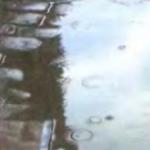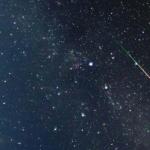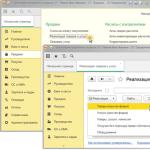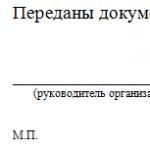Lyrid meteor shower. Lyrid meteor shower: When, where and how to see it
Each of us at least once admired the stunning spectacle of star rain. Knowing the dates of starfalls in 2017 in advance, you will be able to make the most of these events and not miss a single star shower.
For a long time, starfall has been considered a mystical event, captivating with its beauty and grandeur. Contemplation of the starry sky helps to achieve inner harmony, and when you see a shooting star, you can make any wish that will surely come true.
Quadrantids in January 2017
Lyrids starfall in spring 2017
This year the Lyrid shower should be expected in April, from the 16th to the 25th. The constellation Lyra has been giving us this stunning spectacle for several centuries. In 2017, the peak of the meteor shower will occur on April 21, and the overall intensity of meteor falls will decrease compared to last year.
Energetically, this April starfall is perfectly compatible with the fulfillment of desires related to self-development and creativity. At this time, it will be easiest to start learning a new hobby or gain useful skills.

When will the Aquarids starfall occur?
Aquarids are a meteor shower divided into three types:
- Eta Aquarids: The shower can be seen from April 19 to May 28, 2017;
- Delta Aquarids: Meteor shower runs from July 12 to August 23;
- Iota Aquarids: This meteor shower will begin on July 1 and end on September 18.
The energy of the Aquarids starfall is extremely strong: this shower of meteors brings fundamental changes, inspiration and love. During these three starfalls, you can fulfill your deepest desire and completely change your life and destiny.

2017 Perseid meteor shower
The Perseid meteor shower is the most famous and brightest. In the coming 2017, it can be seen from July 18 to August 24, and the peak of activity with the fall of more than 250 meteors per hour will reach August 11-12. It is better to admire this spectacle of incomparable beauty away from the city and sources of street lighting: the ideal solution would be a trip to the village or a country trip with an overnight stay in nature.
The energy of the Perseid meteor shower is extremely powerful and requires careful handling. For example, astrologers recommend that during this period of time you carefully weigh your every word and even thought, since such a bright starfall can attract into your life absolutely everything that you say or think about while experiencing strong emotions. At this time, empathy will help more than ever: you will be able to better understand those around you and avoid many troubles.

Draconids in autumn 2017
The Draconid glow can be observed annually from October 7 to 12: although this meteor shower is very brief, it is unusually bright and has a strong energy. This year, the peak of starfall activity will occur on October 8, and the intensity will reach 20 meteors per hour.
The Draconids were given to us by the constellation Draco, and on a subtle level they extremely sharpen the sense of justice. During this period, it is extremely easy to “break the woods”, unable to cope with your own emotions, or to fall into melancholy from the general injustice of the world. Astrologers and psychics recommend not starting new businesses and not making fateful decisions at this time. You can take care of yourself and your needs, give warmth, care and attention to your loved ones, and also pay more attention to the beauty around you.

Orionid meteor shower
This starfall is rightfully considered one of the most beautiful. The Orionids in 2017 will begin their movement on October 2 and end around November 7-8. The speed of falling meteors in the stream is very fast, and the intensity of the meteor shower will reach 15-20 meteors per hour.
The energy of the Orionids is tough, fast, impulsive. Emotions will break through even in the most restrained and cold-blooded people, feelings will be intense, and words will be hot and sincere. Try to be frank with yourself and your loved ones at this time, because sometimes a frank conversation can correct even the most difficult situation.

Leonids in 2017
Typically, the Leonids are far from the brightest meteor shower: the flow rate reaches no more than 10 meteors per hour. But this year we'll see a spike in this meteor shower, which occurs every 33 years. The Leonids will be much brighter than usual, and the rate of meteor showers could reach 20-30 per hour. Such a spectacle will be beautiful in the cold autumn sky: you can watch the starfall from November 8 to November 28, 2017.
Energetically, the Leonids perfectly contribute to creative inspiration: at this time poetry is best written, paintings are created and the art of meditation is comprehended. Don’t be afraid to create and express yourself: your work will bring very real results.

When can you see the Geminids in 2017?
The Geminids are a major stellar shower that ends the calendar year. It will be possible to observe this meteor shower from December 4 to 17, and it will reach its peak of activity on the 13-14th. This time the shower will pass through the constellation Gemini: this means that the meteor shower will be best seen in the Northern Hemisphere.
The energy of the Geminids will contribute to restorative practices and the fulfillment of desires: at this time, the beginning of any creative process will be especially good and successful. Try to look for answers about your purpose and path at this particular time: the energy of the meteor shower will help you receive comprehensive information at the subconscious level.
The starry sky contains many attractive secrets, and only some of them have been unraveled by astronomers and astrologers. It is no secret that the stars directly influence our lives, and for it to be happy, it is necessary to be in harmony with lunar and stellar energy. Will be a good help with this
April 22 is not just Earth Day. This is also the peak of the morning Lyrid meteor shower in 2017.
The annual Lyrid meteor shower has begun! It is active every year from approximately April 16 to April 25. In 2017, the peak of this downpour, which usually lasts less than a day, is expected on April 22. The greatest number of meteors usually fall in the hours before dawn. Overall, the outlook for this year's Lyrid meteor shower looks pretty good, although meteor showers are notoriously fickle and not entirely predictable!
How many Lyrid meteors can we expect in 2017? You can spot the Lyrid meteorite anytime during the shower (April 16-25), but most meteors are likely to fall in the dark hours before dawn on April 22. In moonless skies, you can see approximately 10 to 20 Lyrid meteors per hour. This year, the slender crescent moon shouldn't pose too much of a challenge to sightings.
By the way, if you see a meteor... pay attention to whether it leaves a persistent ionized gas trail that glows for a few seconds after the meteor passes. About a quarter of Lyrid meteors actually leave such trails.

Where to look? If you trace the paths of all the Lyrid meteors, they appear to originate from the constellation Lyra the Harp, near the shining star Vega. This is just a random alignment as these meteors burn up in the atmosphere at an altitude of about 100 kilometers. Meanwhile, Vega is trillions of times further away at 25 light years.
You don't need to identify Vega or its constellation Lyra to watch the Lyrid meteor shower. The idea that you have to recognize the origin of a meteor shower in order to see any meteors is completely false. Any meteors visible in the sky often appear unexpectedly, in all parts of the sky.
Keep in mind that the star Vega is quite far north of the celestial equator, so the Lyrid meteor shower favors the Northern Hemisphere.
Lyrid meteorites in history. The Lyrid meteor shower has the distinction of being one of the oldest known meteor showers. Evidence of it appeared about 2700 years ago.
The ancient Chinese are believed to have observed Lyrid meteors "falling like rain" in 687 BC.
Incidentally, this period in ancient China corresponds to what is called the Spring and Autumn Period (circa 771-46 BC), a period associated with the Chinese teacher and philosopher Confucius, one of the first to support the principle: “Thou shalt not to others what you don’t want for yourself.” I wonder if Confucius saw the Lyrid meteors...
Comet Thatcher is the source of the Lyrid meteors.
Every year, at the end of April, our planet Earth crosses the orbital path of Comet Thatcher (C/1861 G1). Comet Thatcher last visited the inner solar system in 1861. This comet is not expected to return until 2276.
Chunks of rock ejected by this comet bombard the Earth's upper atmosphere at a speed of 177,000 km per hour.
The Lyrid meteor shower will show us 10 to 20 meteors per hour at its peak on a moonless night. The peak number of meteorites is expected to fall on the morning of April 21 or 22. In 2017, the light of the waning crescent moon will not disturb the observer too much. On rare occasions, Lyrid meteors can bombard the sky with nearly 100 meteors per hour. This is not expected this year... but anything is possible.
like( 3 ) I do not like( 0 )
The largest number of meteors from the Lyrids, like most showers, is observed in the early morning hours, when the radiant rises highest. The constellation Lyra rises highest above the horizon at 4 a.m. local time. Late in the evening it is more advantageous to observe while lying down or in a reclining chair with your feet to the east. In the morning hours, as the constellation Lyra rises higher, it is beneficial to point your feet to the north, west or south and observe approximately 50-60 degrees above the horizon. You should not look directly at the radiant because the meteors will not be long and fainter ones may be missed.
The position of the radiant R Lyrid in the middle latitudes of Russia on April 22 at about 4 o'clock local time.
For ease of orientation, the figure shows the “Summer Triangle”, which is an asterism in the form of a triangle of three bright stars: Vega (α Lyrae), Deneb (α Cygnus) and Altair (α Eagle).
Binoculars and telescopes are useless when observing meteor showers , as they limit the field of view to a few degrees. Meteors can be seen with the naked eye! Only if the meteor leaves a dust trail behind it will it be useful to observe through binoculars how the trail will bend and dissolve within a few minutes under the influence of atmospheric currents.
The Lyrids are very obstinate: the usual values of 15-20 meteors per hour alternate in an unpredictable way with bursts in the observed number of meteors, not only from year to year, but also during one night. The changing activity of meteor showers is explained by the fact that the particles in the streams are unevenly distributed along an elliptical orbit that intersects the Earth's.
It is the oldest star shower and can be traced back to 687 BC in historical records. The last powerful stellar storms were seen in the USA in 1803 (700 meteors per hour) and in Ukraine in 1922 (more than 2000 meteors per hour). The last short burst of Lyrid activity (ZHR=90) occurred in 1982 over the United States.
If the Lyrids are intense this year, we may see particularly bright fireball meteors. They sweep across the entire sky like sparkling balls with a bright trail, causing objects on the ground to cast shadows.
Bright fireball from the Lyrids
What kind of star shower will there be this year? The only way to know for sure is to go outside and look. To enjoy the spectacle in the city, you need to move away from street lighting and find a sky unobstructed by buildings for a good view, otherwise you risk not noticing a single meteor.
Happy Lyrid sightings!
Based on materials from Astronet
> > LyridsLyrids– meteor shower from the constellation Lyra: when to observe, peak activity, location, connection with Comet Thatcher, research with photos, videos, interesting facts.
Lyrids(April Lyrids) is one of the oldest meteor showers, recorded 2600 years ago. Meteors can be observed from April 16-25. The peak occurs from April 22-23. The stream is associated with comet C/1861 G1 - Comet Thatcher. At maximum, 5-20 meteors per hour are noticeable. The average speed is 10 meteors per hour.
Basic parameters of Lyrid:
- Parent: C/1861 G1 (Comet Thatcher)
- Radiant: Lyra constellation
- First entry: 687 BC
- Dates: April 16-25
- Peak: April 22
- Maximum amount: 10 meteors per hour
Best viewed in rural areas, away from city lighting. It’s very good if the moon’s glow doesn’t interfere. The best time is before dawn.

Lyrids reach 2nd magnitude. The marks left behind last for several minutes. Once every 60 years, the Lyrids gain greater strength. This occurs when a comet completes its orbit and causes an outburst.
In 1922 and 1982, observers at the peak counted 90 meteors per hour. In 1803, the April Lyrids created a meteor storm of up to 700 meteors per hour.

The radiant lies in the direction of little north. It is very easy to find, as it contains the brightest (5th brightest among stars), which also forms. The radiant is located near the star.
Data
Comet Thatcher (C/1861 G1) was named after American amateur astronomer A.E. Thatcher, who discovered it on April 5, 1861. In May 1861, it approached us at a distance of 50.1 million km and made its closest approach to the Sun (perihelion) in June 1861. The comet's perihelion distance is 0.9207 AU, and its aphelion (maximum distance) is 110 AU. The orbital period is 415 years, so it will return to perihelion in 2276.
The first recording of the Lyrids was made in 687 BC. in China. "Zuo Zhuan" (an important and former Chinese work) mentions that "at night the fixed stars are invisible, and at midnight they fall like rain."
In Australia, Lyrids were perceived as the scratch of an ocellated hen (a terrestrial Australian bird). The April Lyrids coincide with the bird's nesting season. She herself is depicted in the form of Vega.
In 2017, the peak of the starfall falls on April 21-22, but the chances of making a wish among the inhabitants of the Earth remain almost until the end of the month.
Where, when and how
The Lyrid meteor shower can be observed from anywhere on the globe, but residents of the northern hemisphere, particularly Europe, will witness a brighter and more colorful spectacle.
The shower will peak on April 22, although isolated meteors have been visible since Sunday. This year the star shower will not be the most impressive, despite this, astronomers recommend not to miss this spectacular event.
Shooting stars will be best seen after midnight and before sunrise. The intensity of the meteor shower varies from year to year, with up to 15-20 meteors per hour expected this year.
The best way to see a meteor shower is to make sure you are away from any light source. You can observe a starfall without special equipment - flying meteors can be seen with the naked eye, you just need to raise your head to the constellation Lyra.
Moreover, you need to look not at the radiant itself, but slightly to the side from this point. The longest and brightest meteors are observed far from the radiant.
The Lyrid meteors are white and quite fast. They do not have noticeable tails, but are characterized by bright flashes. Meteors shoot out from a radiant that is actually an optical illusion.
Meteors move along parallel trajectories, but their flight appears as if they originate from a single point, just as parallel roads appear to converge at a single point beyond the horizon.
The moon at this time is in its last quarter phase, which will appear over the horizon only after 4:30 am, so it will practically not interfere with the night and morning observation of the first spring starfall.
The evenings are chilly, so dress warmly and make yourself as comfortable as possible. If desired, you can use sun loungers or sleeping bags. Spend at least 30 minutes outside to get used to the darkness.
Once you have chosen a location, look up, select a section of the sky and watch it, and they (meteors) will begin to appear. Meteors, as a rule, fly by in flashes and jerks with slight lulls between them.
By the way, pay attention to whether the meteor leaves a persistent ionized gas trail that glows for several seconds after the meteor passes.
Astronomers say that about a quarter of Lyrid meteors actually leave such trails.
Lyrids
Starfall is an unusually beautiful phenomenon that everyone dreams of seeing and making a wish accordingly. The nature of this phenomenon has interested astronomers since ancient times. Meteor showers are named not by the comets that gave birth to them, but by the constellations where the radiant is located.
The Lyrids are one of the oldest known starfalls and are named after the constellation Lyra. The radiant of the April shower lies on the border of the constellations Lyra and Hercules, but closer to Lyra.
Historical records show that people have been observing the Lyrids for more than 2,700 years - the ancient Chinese are believed to have observed "stars falling like rain" in March 687 BC.
And in April 1803, a real rain of meteors swept over the territory of the North American continent, which seemed to fly directly from the center of the Lyra constellation - the number of shooting stars reached 700 per hour.
Since then, the Lyrids have become a rather weak celestial show, but there are surprises that keep interest in this phenomenon.
So in 1922, the Lyrids again surprised astronomers and rained stars on the earth with an intensity of 1800 meteors per hour, and in 1982 they again showed activity, although much less - no more than 100 meteors per hour.
For several years now, astronomers have been trying to predict the possible intensity of the Lyrids this year or somehow explain the irregular bursts of their amazing activity. So far they have not succeeded.
Why
The source of the Lyrid meteors is Comet Thatcher - every year, in the second half of April, planet Earth crosses the orbital path of Comet Thatcher (C/1861 G1), that is, passes through the dust left over from the comet.
Comet Thatcher last visited the inner solar system in 1861 and is not expected to return until 2276, as it orbits the Sun once every 415 years.
Pieces of rock ejected by this comet bombard the Earth's upper atmosphere at a speed of 177 thousand kilometers per hour.
The Lyrids are considered one of the most powerful meteor showers, along with the August Perseids and December Geminids. On rare occasions, Lyrid meteors can bombard the sky with nearly 100 meteors per hour.
The material was prepared on the basis of open sources.





